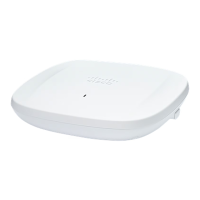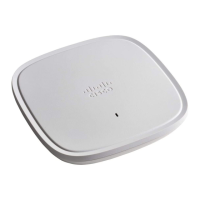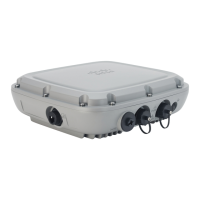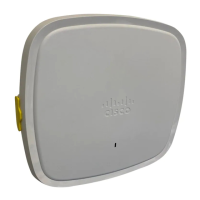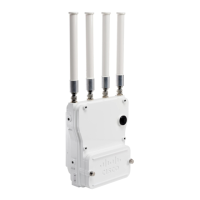• A 2.4-GHz IoT (BLE) radio
• Environmental Sensors:
• Ambient temperature sensor
• Air quality sensor (Total Volatile Organic Compound [TVOC])
• Relative humidity sensor
The environment sensors are configurable on Cisco DNA Spaces platform.
For more information on how to configure the AP sensor in DNA Space,
see the AP as a Sensor section in the Cisco DNA Spaces: IoT Services
Configuration Guide.
Note
• Integrated internal antennas that are omnidirectional in azimuth for the 2.4-GHz, 5-GHz, and 6-GHz
bands.
• Scanning radio utilizes two 2.4-GHz, 5-GHz, and 6-GHz antennas.
• Multiuser Multiple-Input Multiple-Output (MU-MIMO) technology for uplink and downlink.
• Orthogonal Frequency Division Multiple Access-based (OFDMA-based) scheduling for both uplink and
downlink.
• The following hardware external interfaces:
• 1x100/1000/2500/5000 Multigigabit Ethernet (RJ-45)
• RS-232 Console Interface through RJ-45
• Recovery push button (enables partial or full system configuration recovery)
• USB 2.0 port, type-A connector
• DC 54V power jack
• One multicolor LED
• Integrated Bluetooth Low Energy (BLE) radio to enable IoT use cases such as location tracking and
wayfinding.
• Intelligent Capture probes the network and provides Cisco DNA Center with deep analysis.
• Spatial Reuse (also known as Basic Service Set [BSS] coloring) that allows APs and their clients to
differentiate between multiple BSS, thus permitting more simultaneous transmissions.
• Power savings mode called Target Wake Time (TWT), which allows a client to stay asleep and wake up
only at prescheduled (target) times to exchange data with the AP. This provides significant energy savings
for battery-operated devices.
• Cisco Digital Network Architecture Center (DNA Center) support to enable Cisco DNA Spaces, Apple
FastLane, and Cisco Identity Services Engine.
Cisco Catalyst 9166 Series Wi-Fi 6E Access Point Hardware Installation Guide
2
About the Access Point
Cisco Catalyst 9166 Series Wi-Fi 6E Access Point Features
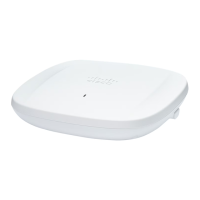
